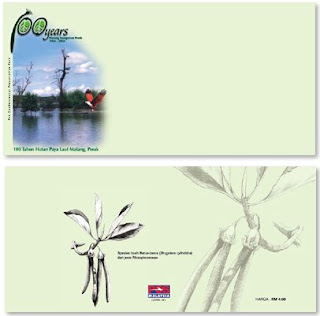 Humpback Whale (Megaptera Novaeangliae)
Humpback Whale (Megaptera Novaeangliae) Its scientific name was given to this species in 1781 by a German naturalist named Borowski.
 Humpback whales belong in the Balaenidae family and are categorized as baleen whales (baleen are the series of plates used to strain food from seawater). Humpback whales have about 300 baleen plates, which are skater grey. These baleens hang from the upper jaw like a fringed curtain on both sides of the large mouth. Therefore, a humpback whale needs to only take a mighty slurp of "krill soup," close it's mouth, and expel the excess water through the horny comb and its lips. It will swallow the filtered broth of food that remains behind. The back of a Humpback body is black and normally shades to a white belly. The shade of black on the whales varies in different populations, according to locality. Their flippers are rather long and have serrated leading edges that indicate the fingers. Their dorsal fins are relatively large and are placed half down the back. They are followed by a series of hillocks, which end at their tails.
Humpback whales belong in the Balaenidae family and are categorized as baleen whales (baleen are the series of plates used to strain food from seawater). Humpback whales have about 300 baleen plates, which are skater grey. These baleens hang from the upper jaw like a fringed curtain on both sides of the large mouth. Therefore, a humpback whale needs to only take a mighty slurp of "krill soup," close it's mouth, and expel the excess water through the horny comb and its lips. It will swallow the filtered broth of food that remains behind. The back of a Humpback body is black and normally shades to a white belly. The shade of black on the whales varies in different populations, according to locality. Their flippers are rather long and have serrated leading edges that indicate the fingers. Their dorsal fins are relatively large and are placed half down the back. They are followed by a series of hillocks, which end at their tails. Octopus (Octopus Bimaculatus)
Octopus (Octopus Bimaculatus)Octopus are invertebrate and mollusc. They can be found worldwide, in warm temperate waters. Sometimes, they are also known as 'devil fish,' even though octopuses are not fishes but are related to oysters and mussels. An octopus has a big round head, a pair of big eyes and eight suckered arms (tentacles). These tentacles are used to push them forward and moved fast in the water. Octopuses have soft body and are squid-like. They feed on small fishes and crabs. When an octopus senses danger, it inks its surrounding waters black to protect itself.
 Bottlenose Dolphin (Tursiops Truncatus)
Bottlenose Dolphin (Tursiops Truncatus)They are classified under the Delphinidae family, the largest family of Cetaceans (classifications of the genera and species in this family is constantly changing). Bottlenose dolphins can measure up to 3.9 meter, weighing around 150 kg - 650 kg. They can be identified easily for their sickle-shaped dorsal fin and dorsal fin and distinct short beak. They usually have dark grey body with lighter underside, grading to white. Bottlenose Dolphins 'see' by listening to the echoes bounced off by objects in the water to determine the location and characteristic of an object. The dolphins were made famous by the television show 'Flipper,' they are also popular for being playful and highly sociable.
 Thornback Ray (Raja Clavata)
Thornback Ray (Raja Clavata) They are characterized by their triangle or rhomboid-shaped body. The tails are slender and whip-like. These rays have a pair of eyes that protrude above the dorsal surface. These eyes have some degree of mobility. The large thorn-like spines on its tail and central position of the wings give this ray its name. Thornback rays are classified as a fish and are usually found in deep sea of about 185 meter in depth, Their teeth show sexual dimorphism, males have pointed teeth and females have flat, rounded teeth, they feed on crustacean and fish such as herring, sprats and flatfish. While swimming, Thornback rays undulates the enlarged pectoral fins, aptly called 'wings' and the tail acts as a rudder.
 Technical Details
Technical DetailsDate of Issue : 9-Oct-2004
Stamp Value : 30 Sen; 50 sen; RM 1.00
Stamp Size : 40mm X 30mm
Perforation : 14
Sheet Content : 20 Stamps
Miniature Sheet Denomination : RM2.00
Miniature Sheet Size : 100mm X 70mm
Stamp Size in Miniature Sheet : 40mm X 30mm
Paper : Watermarked, Phosphor Coated
 Printing Process : Lithography
Printing Process : LithographyPrinter : Secura Security Printing Sdn. Bhd.
Stamp Designer : Hudacorp Sdn Bhd
First Day Cover Value : 30 Sen
Presentation Pack Value : RM 3.50
Miniature Sheet Value : RM 2.00
Folder Value : RM 5.00








